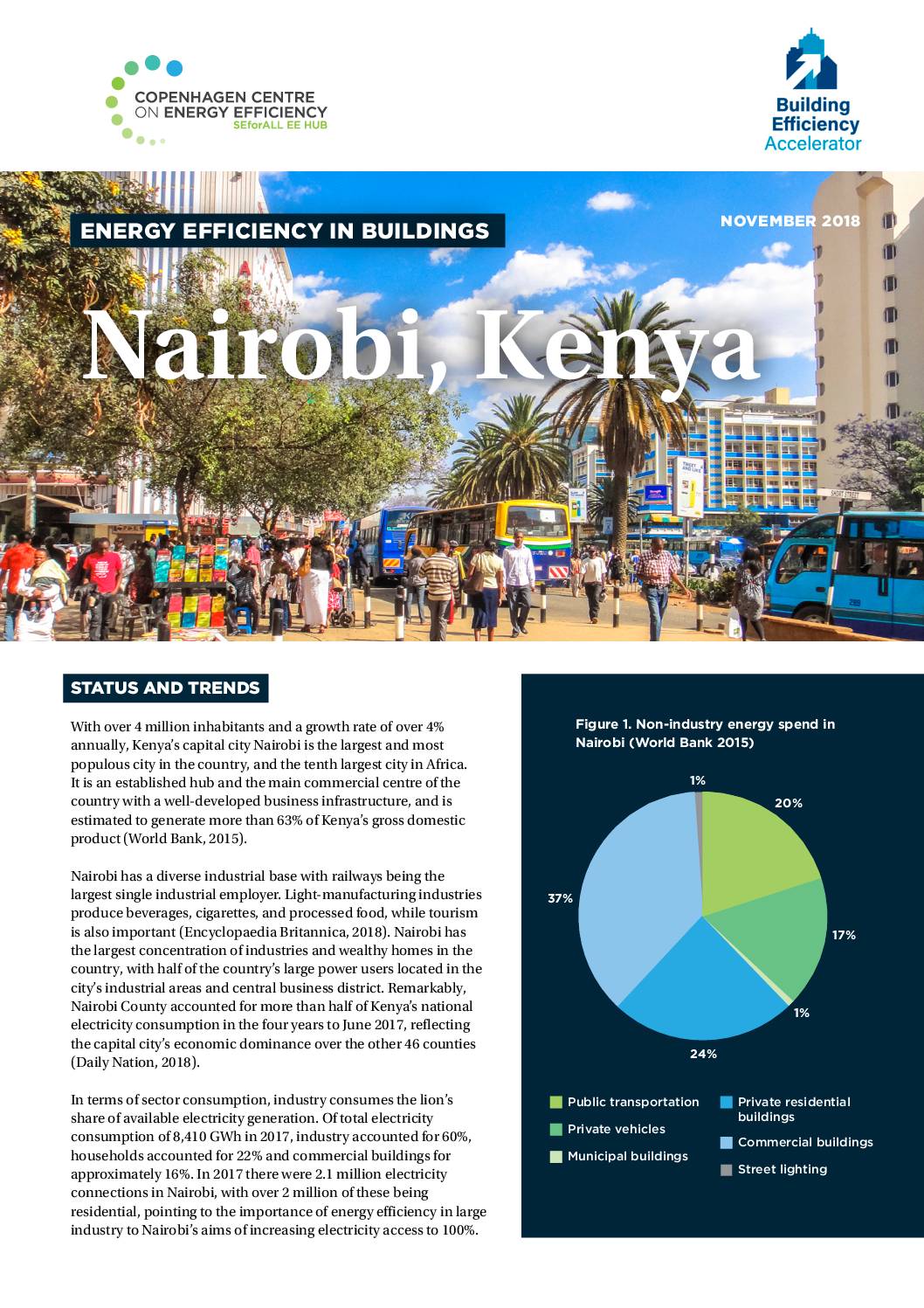With over 4 million inhabitants and a growth rate of over 4% annually, Kenya’s capital city Nairobi is the largest and most populous city in the country, and the tenth largest city in Africa. It is an established hub and the main commercial centre of the country with a well-developed business infrastructure, and is estimated to generate more than 63% of Kenya’s gross domestic product (World Bank, 2015).
Nairobi has a diverse industrial base with railways being the largest single industrial employer. Light-manufacturing industries produce beverages, cigarettes, and processed food, while tourism is also important (Encyclopaedia Britannica, 2018). Nairobi has the largest concentration of industries and wealthy homes in the country, with half of the country’s large power users located in the city’s industrial areas and central business district. Remarkably, Nairobi County accounted for more than half of Kenya’s national electricity consumption in the four years to June 2017, reflecting the capital city’s economic dominance over the other 46 counties (Daily Nation, 2018).
Download sourceShare this

Sectors: Buildings, Cities, Industry, Urban Climate Neutrality
Country / Region: Africa, Kenya
Tags: cities, economic capital, electricity, electricity generation, energy, industry, infrastructure, tourismIn 3 user collections: Urban Climate Neutrality (Kenya) , Energy Efficiency in Buildings: Assessments for Countries and Cities , C2E2 Publications
Knowledge Object: Cities Cluster, GPUC, Publication / Report
Published by: Copenhagen Centre on Energy Efficiency
Publishing year: 2019
Author: Copenhagen Centre on Energy Efficiency
